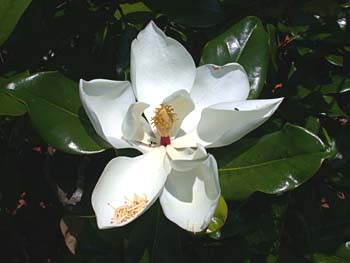
Native to the coast from southernmost North Carolina south, this commonly planted and frequently escaped evergreen medium-large tree has large glossy dark green leaves and huge fragrant white flowers.
Orange Co., NC 6/22/03.
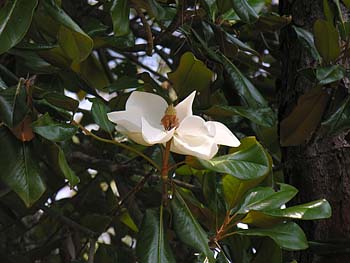
Southern Magnolia is a common escape in the Sandhills region.
Moore Co., NC 6/18/05.
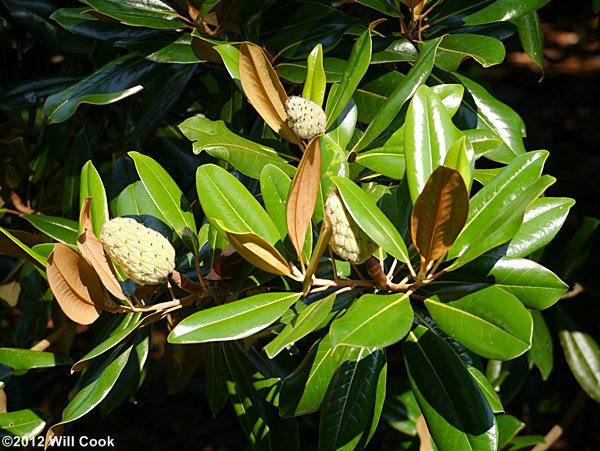
Wake Co., NC 7/18/2012.
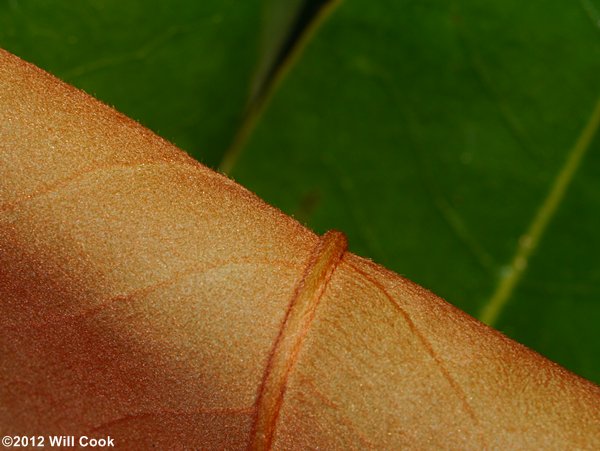
Planted cultivars are often densely rusty-hairy beneath. "Wild" trees are usually glabrous beneath, green and without rusty hairs.
Wake Co., NC 7/18/2012.
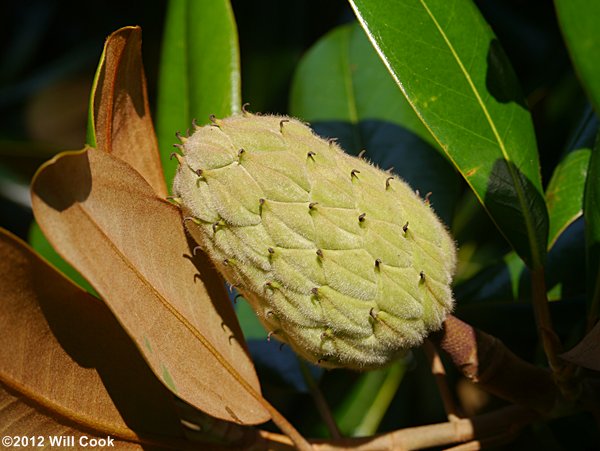
Unripe fruit.
Wake Co., NC 7/18/2012.
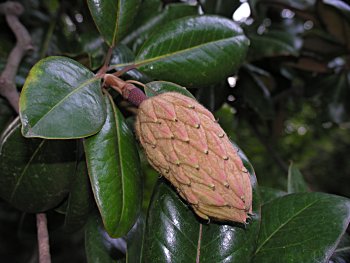
Ripening fruit.
Chapel Hill, NC 9/9/06.
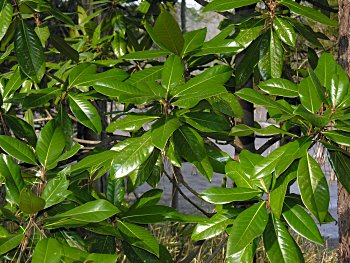
The large, thick glossy dark green leaves are nearly unmistakeable. They are fragrant when crushed. The leaf undersides are normally a light green in escaped trees, most often rusty in planted ornamentals. The semi-evergreen Sweetbay (Magnolia virginiana) is smaller in every way, with glaucous leaf undersides, more fragrant leaves, and even more richly scented flowers.
Moore Co., NC 3/14/07.
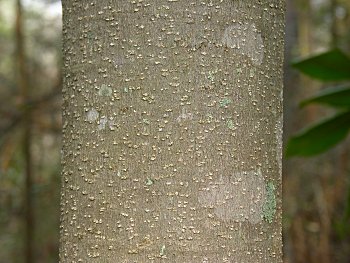
Bark of a small tree. The bark is smooth, except for the warty lenticels.
Moore Co., NC 3/14/07.
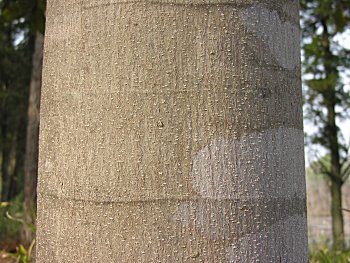
Bark of a medium-sized tree.
Moore Co., NC 3/14/07.
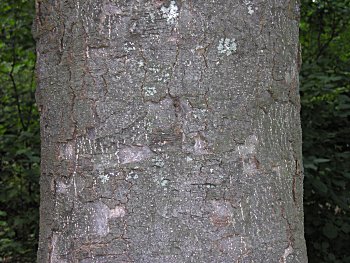
The bark of large trees is cracked into plates, more so than that of most other Magnolia species.
Chapel Hill, NC 9/9/06.
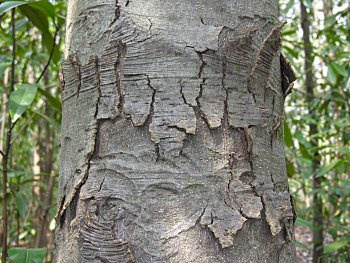
Durham, NC 3/28/07.
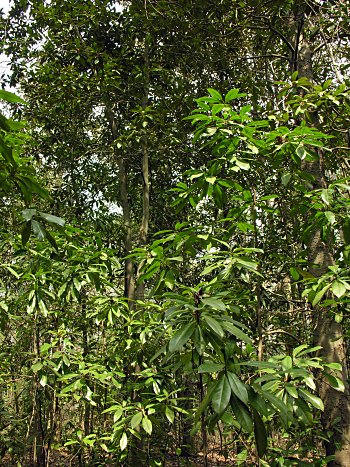
Southern Magnolia is a frequent escape from cultivation and can become dominant in suburban woodlands. It would be labelled as an invasive exotic if it weren't native to the southeastern corner of the state. The urban heat island effect may aid its northward spread in cities.
This photo shows a pure stand of Magnolia grandiflora (seedlings, saplings, and mature trees) in woodlands on the Duke University campus.
Durham, NC 3/28/07.